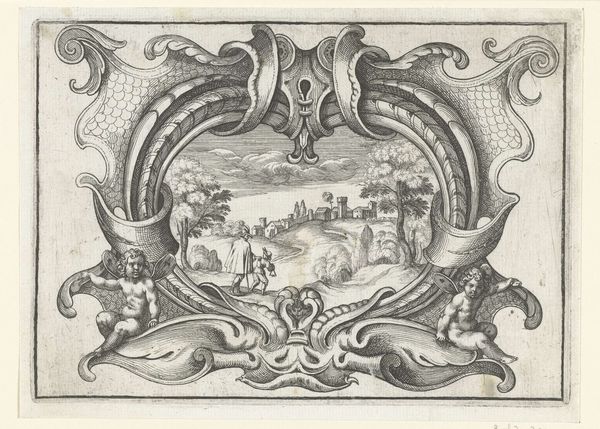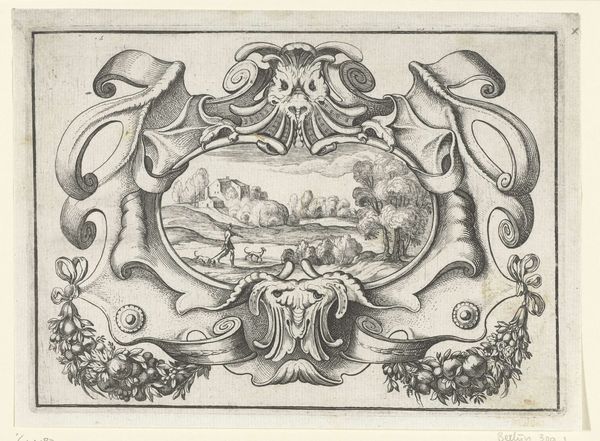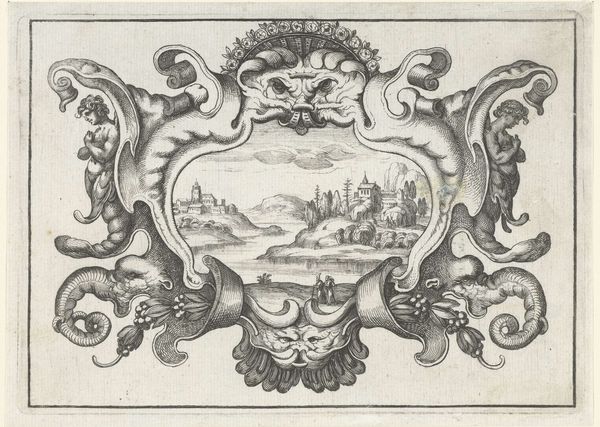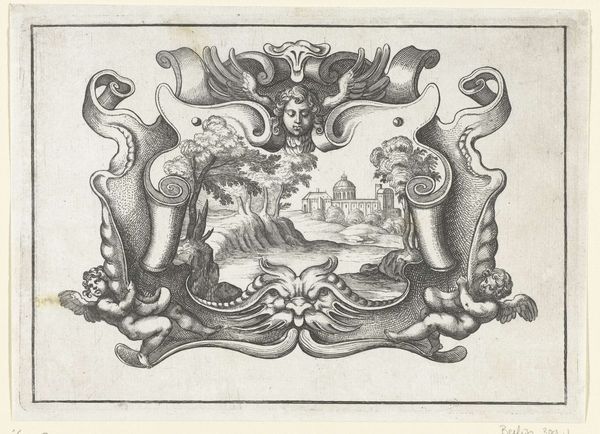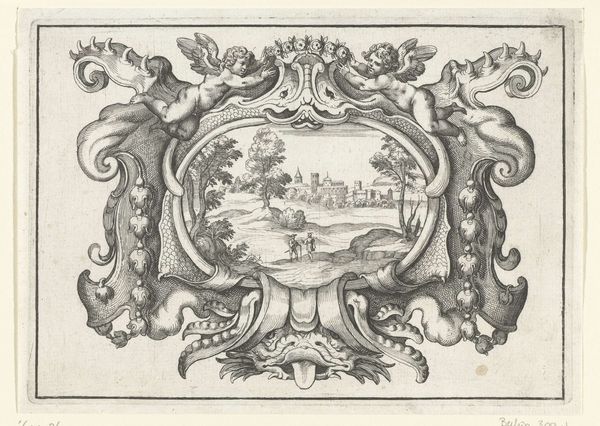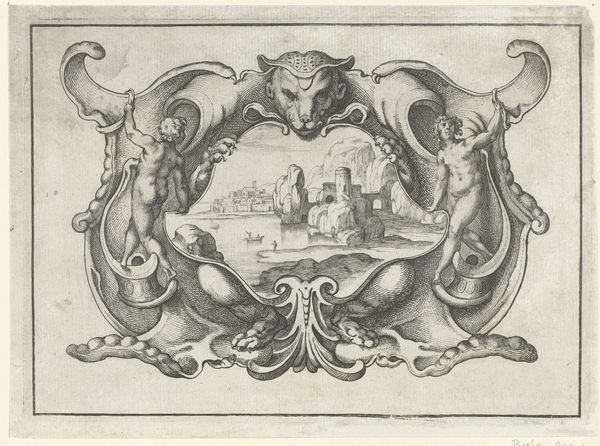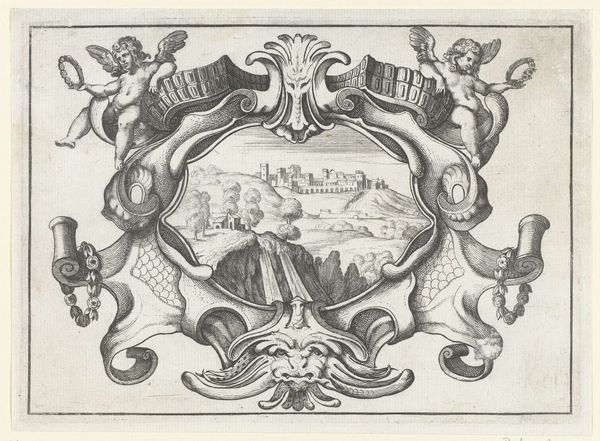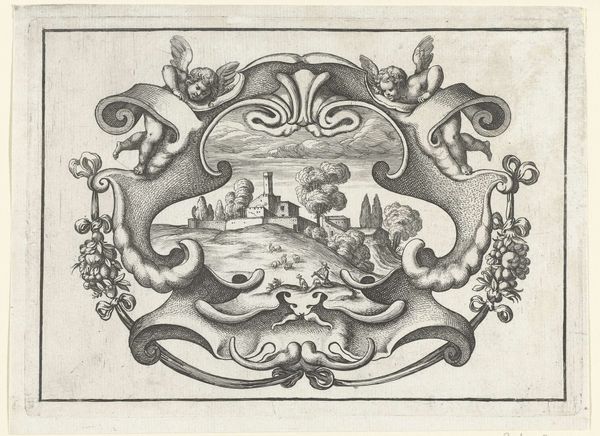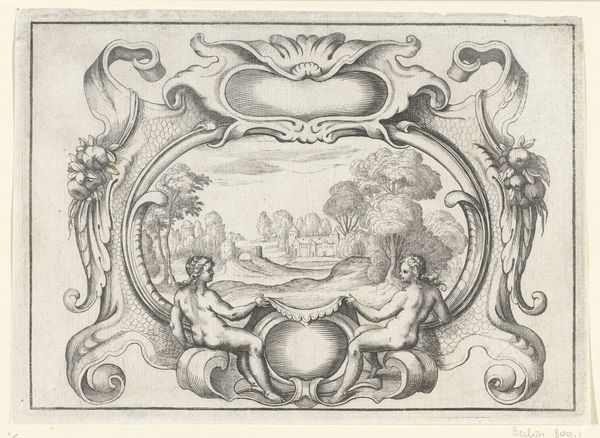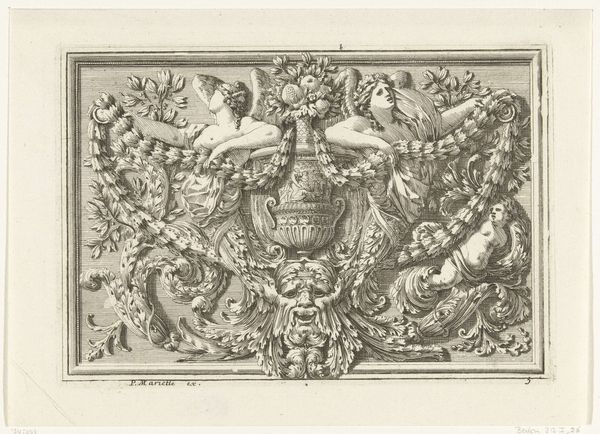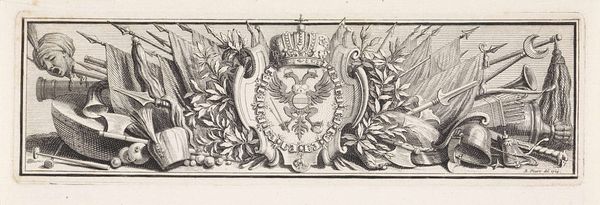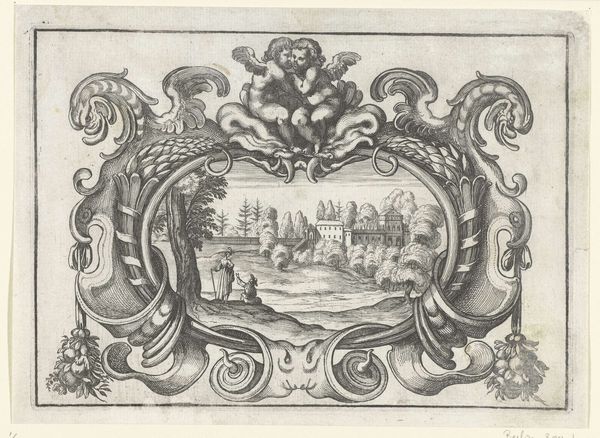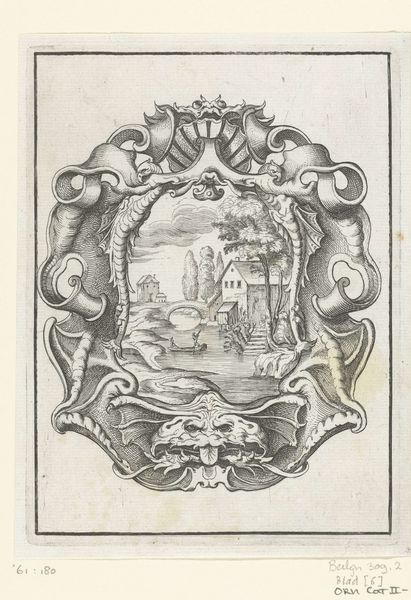
drawing, etching, ink
#
drawing
#
baroque
#
pen drawing
#
etching
#
landscape
#
ink
#
genre-painting
Dimensions: height 135 mm, width 192 mm
Copyright: Rijks Museum: Open Domain
Curator: This pen and ink drawing by Daniel Rabel is entitled "Cartouche met twee monsterhoofden en guirlandes", created around 1634. Its elaborate ornamental frame encloses a genre scene, etched with remarkable detail. Editor: My first impression is one of stark contrasts. The whimsical figures in the landscape contrast the grotesque monster heads and decorative garlands of the Baroque frame. It's as if the peace and harmony in nature is perpetually framed, even threatened, by something wild and uncontrollable. Curator: Absolutely, I agree. That Baroque exuberance, those somewhat unsettling monster heads—they do lend a sense of drama and tension. The monster head and foliate elements that seem to emerge organically, echoing forms found in nature. Consider, though, the power these symbolic representations held—warding off evil, embodying protection. Editor: But for whom? Framing bucolic bliss with monstrous visages speaks to social divisions in the 17th century, when leisure and enjoyment of nature was often coded in race and class terms. How do we disentangle a “universal” appeal to nature from its complicity with existing inequalities? Curator: A critical point. Think too of how the landscape itself functions within this visual rhetoric. We see figures, perhaps members of the nobility, leisurely enjoying a carefully cultivated space, reinforcing an idealized vision of harmony between humanity and nature—one often contrasted against more dangerous realities of social unrest. The image becomes not just an aesthetic object but also a social text, rife with class-based messaging. Editor: Indeed. Rabel seems to create a microcosm of Baroque society, revealing both its celebrations of refined existence and the shadowy, disquieting elements that underlie it. I see this juxtaposition as a mirror reflecting the contradictions of wealth, class and freedom. Curator: Precisely, its enduring quality hinges on how clearly these emblems still reflect aspects of our relationship to history. Editor: So much is captured in that stark visual contradiction; thank you for revealing those insights, which make me consider how art acts as witness and instigator within systems of inequality.
Comments
No comments
Be the first to comment and join the conversation on the ultimate creative platform.
